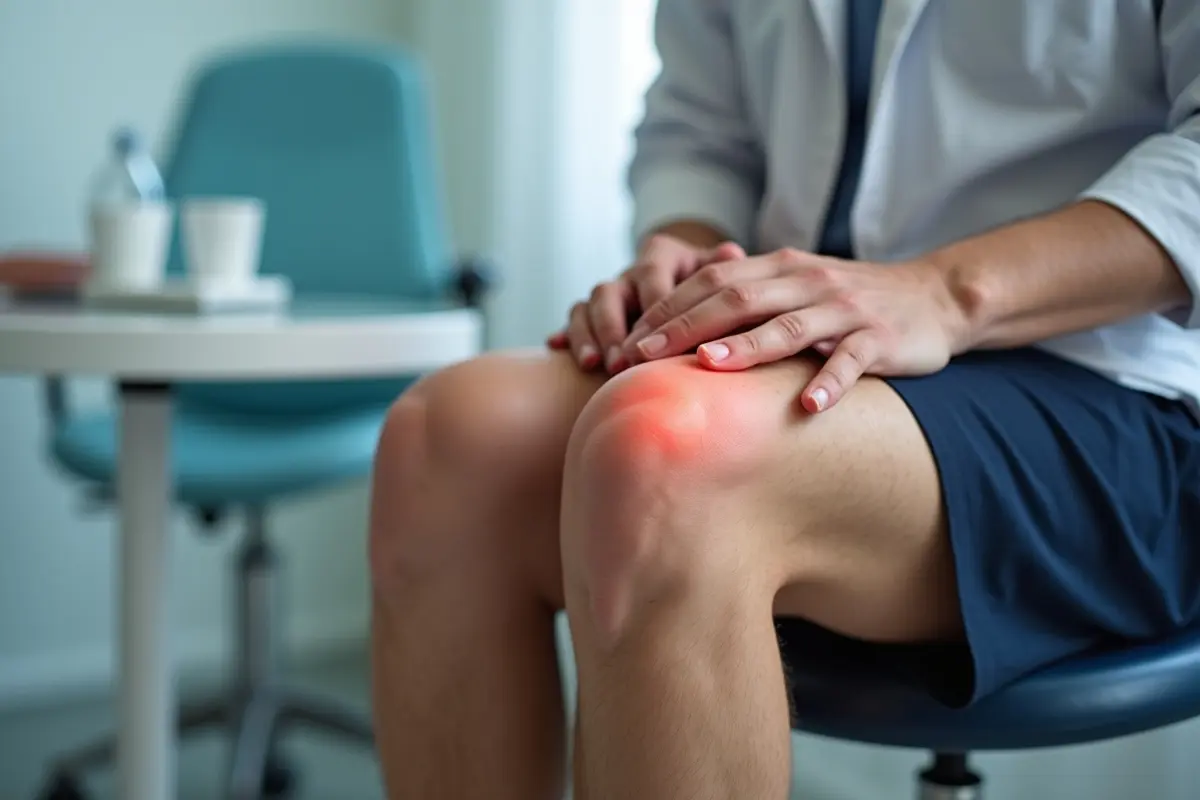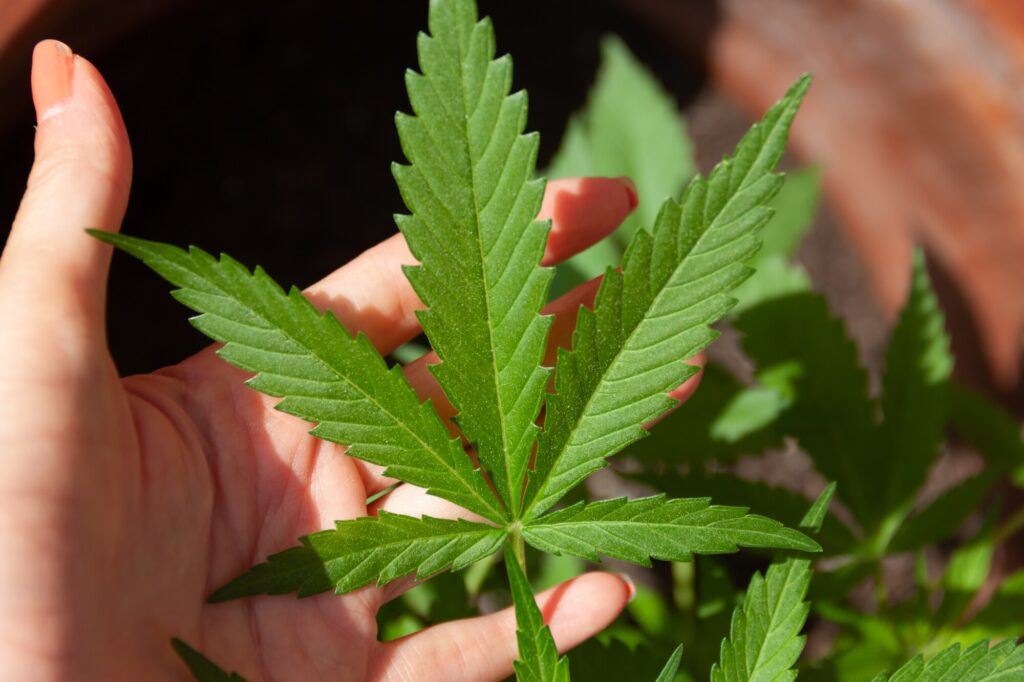Knee pain can be a frustrating experience, especially when it limits your mobility or keeps you from activities you love. Understanding exactly where your knee hurts and the type of pain you’re feeling is the first step toward a clearer diagnosis and a more effective treatment plan.
The knee is a complex joint, and pain in one spot can indicate a very different issue from pain in another. So, let’s explore the different areas of the knee, what pain in each location can signify, and how this knowledge can help you on the road to recovery.
Understanding the Knee’s Structure
The knee isn’t just a simple hinge that bends and straightens; it’s an intricate structure of bones, cartilage, ligaments, tendons, and muscles that work together to support weight and allow movement. Knowing a bit about the anatomy will help you better understand the types of pain associated with specific areas of the knee.
- Bones – The knee is formed by three main bones: the femur (thigh bone), the tibia (shin bone), and the patella (kneecap). These bones come together at the knee joint.
- Cartilage – Acting as a cushion between bones, cartilage helps absorb shock and provides smooth movement within the joint.
- Ligaments and Tendons – Ligaments hold bones together, providing stability, while tendons connect muscles to bones, allowing the knee to move.
Identifying which area of the knee is in pain can be a big clue toward identifying the underlying issue. So, let’s break it down, area by area.
Knee Pain Location Chart: What Each Area Tells You
You can use this knee pain location chart that outlines common pain sources in each part of the knee. This is incredibly useful, and we’ve got a breakdown of what each area could mean in real terms. Knowing where your pain is located is a good first step toward pinpointing a diagnosis or determining what might be causing it.
Pain in the Front of the Knee
Pain in the front of the knee, often around or behind the kneecap, is common. If you feel discomfort when going up or down stairs, squatting, or even sitting for extended periods, this might point to patellofemoral pain syndrome (often known as runner’s knee).
This condition occurs when the kneecap doesn’t move smoothly along the groove in the femur, leading to pain and inflammation. Other potential issues could include tendinitis (inflammation of tendons) or chondromalacia patella (damage to the cartilage under the kneecap). Pain in this area usually means you should focus on activities that improve knee alignment and strengthen the quadriceps and hip muscles.
Pain on the Inside of the Knee
If the pain is on the inner side (medial) of your knee, it might be related to the medial meniscus or medial collateral ligament (MCL). The medial meniscus, a C-shaped piece of cartilage, can be injured due to sudden twisting or overuse, leading to sharp pain or even a locking sensation.
MCL sprains and strains are also common here, especially after a direct blow to the outside of the knee. If you’re experiencing discomfort on the inner knee, it’s often a sign that there’s stress or strain on these soft tissues and cartilage.
Pain on the Outside of the Knee
Outer knee pain is frequently associated with the iliotibial (IT) band, a thick band of tissue running from the hip to the shin. IT band syndrome is common in runners and cyclists due to repetitive knee bending, leading to friction between the IT band and the outside of the knee. This friction can cause inflammation and sharp pain on the lateral side.
Another potential cause is a lateral meniscus tear, often from trauma or degeneration. If you’re feeling pain on the outside of your knee, rest, ice, and exercises that target hip strength and IT band flexibility are key.
Pain in the Back of the Knee
Pain at the back of the knee can be less common but still indicates specific issues. A Baker’s cyst, for example, is a fluid-filled swelling behind the knee that often accompanies other knee problems, like arthritis or cartilage tears. It can cause stiffness and discomfort, especially when bending the knee.
Another possibility is hamstring tendinitis, which occurs when the tendons connecting the hamstring muscles to the knee become irritated. Back-of-the-knee pain can also point to deeper issues in the knee joint, so it’s worth consulting a healthcare professional for any lingering discomfort in this area.
Pain Deep Inside the Knee Joint
Sometimes, the pain feels like it’s coming from deep within the knee. This could indicate osteoarthritis or degenerative joint disease. Osteoarthritis involves the gradual wearing away of cartilage, causing the bones to rub against each other, resulting in stiffness, pain, and swelling.
This is more common with age, but it can affect younger people as well, particularly those with a history of knee injuries. Deep knee pain can also stem from ACL injuries (tears in the anterior cruciate ligament), common in high-impact sports. Pain in this area often requires a comprehensive approach, from physical therapy to targeted exercises, to address joint stability and strength.
Steps You Can Take for Knee Pain Relief
Knee pain doesn’t have to be a lifelong battle. Here are five essential steps to get you started on your path to relief:
- Rest and Ice – This is your first line of defense against knee pain. Avoiding high-impact activities and applying ice can help reduce inflammation and pain.
- Strengthening Exercises – Focus on exercises that target the muscles around the knee, including the quadriceps, hamstrings, and glutes. Strengthening these muscles can help stabilize the knee joint.
- Stretching – Regular stretching, especially of the IT band and hamstrings, can increase flexibility and reduce tension in the knee area.
- Correct Footwear – Supportive shoes or orthotics can improve alignment, reducing stress on your knees.
- Physical Therapy – A physical therapist can guide you through a personalized plan, helping you strengthen weak muscles and improve knee function.
Moving Forward with Less Pain
Pinpointing your knee pain’s location can provide valuable clues for finding the right treatment and preventative care. While knee pain is common, understanding what each area of discomfort represents can bring you closer to solutions that work. Taking proactive steps—from identifying the source to adopting targeted exercises—can help reduce pain and improve overall knee health.





Leave a Reply
You must be logged in to post a comment.